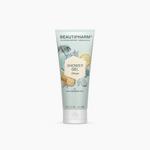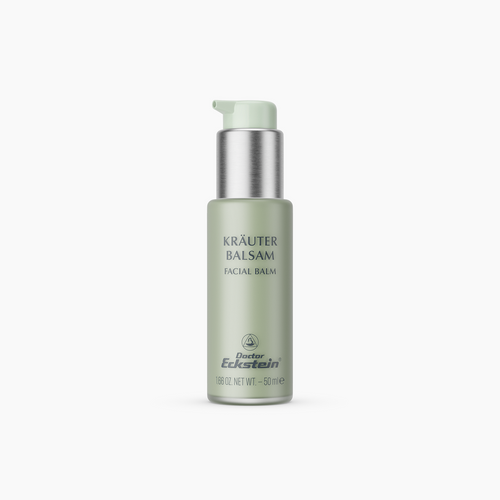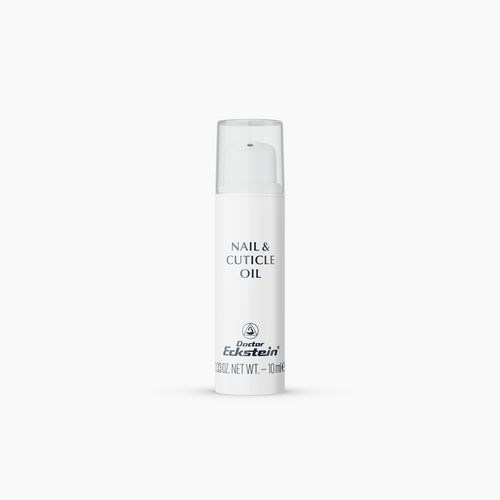When my mother was little, sun protection was not a priority. A typical picture from that time was bodies lounging in the sun by the sea, often colored crayon-red by intensive sunbathing. The sentence “it will turn into a beautiful brown in two days” is well remembered by my mother to this day.
Effective sun protection was only possible with modern UV filters. The development in this area was extremely fast, considering that our first products, which my grandfather developed almost fifty years ago, had a SPF 3 sun protection factor that was hardly to be outdone at the time.
When we then "strengthened" our sun protection in the early seventies and launched it with a protection factor of 6, my grandfather believed that an even higher protection factor had no future, because no one really needed it.
My father's situation is different: he developed sun products with a higher sun protection factor because he realized that people's work and leisure behavior was changing and that their skin was exposed to intense solar radiation for longer and longer.
Today we face new challenges. Our way of life has negative consequences for the earth's ozone layer - a protective shield that absorbs electromagnetic radiation in the ultraviolet spectral range. In particular, UV-B radiation from the sun, which is harmful to life and which can also cause skin cancer, for example, is therefore no longer completely absorbed. As a cosmetics manufacturer, we also take these processes into account with ever higher sun protection factors.

What do we need the sun for?
Sun rays give us warmth, they promote the release of the happiness hormone serotonin, increase our well-being and increase our performance. They enable vitamin D synthesis in the skin, which has a positive effect on the immune and nervous system as well as the metabolism. That is why skin diseases such as neurodermatitis are also treated with it. Customized sun is therefore important so that the body can produce sufficient vitamin D.
What you should know about sun rays. Sunlight consists of different waves, with different wavelengths. The shorter the wave, the higher its energy content and the more dangerous its radiation. Long-wave light, which we perceive as heat radiation, is less dangerous.
Medium- to short-wave ultraviolet radiation (UV radiation) is important to us, since it has a physiological effect on the skin: It is divided into three areas: UV-A, -B and -C. UV-A radiation tans the skin, but also lets it age faster. UV-B radiation is necessary for the formation of vitamin D, but can also cause sunburn. The most dangerous of them is short-wave UV-C radiation, which fortunately is completely filtered through the atmosphere.
The harmful effects of sun rays result from the fact that they generate many free radicals in the skin, which tend to uncontrolled chain reactions. The result: sunburn and premature skin aging. How long you can enjoy the sun without getting sunburned can be estimated from the color of your skin, hair and eyes as well as the pigmentation. However, please note that you cannot be 100% protected. You always get some UV radiation.
Then there is the UV index (UVI). It is an internationally recognized measure of ultraviolet radiation that is effective against sunburn. The index value depends on various factors. This includes the height of the location or area for which it is calculated, the latitude, time of day and season, position of the sun and cloud cover. The index indicates the highest, sunburn-prone radiation of a day, which is usually reached around noon. From a value of UVI 3, sun protection measures are recommended. The higher the UVI value, the higher the sun protection factor and the more extensive the protective measures should be: In addition to the sunscreen, this also includes skin-covering clothing, sun hat, sunglasses and a place in the shade. A value greater than 5 is considered high radiation exposure. The current UV index can be called up via most weather apps and online weather services.
As an indication of which skin type you belong to, you will find the most common classification of the individual types according to the American dermatologist Thomas Fitzpatrick in this blog post. The additional information on the skin's own protection and sun protection are only rough guidelines. Since every skin reacts individually to the sun, it is generally advisable to consult a doctor.
Also important to know: children's skin is not classified according to skin types. A high sun protection factor of at least 30 is absolutely advisable in order to adequately protect the young skin from the sun.
THE DIFFERENT SKIN TYPES
Skin type I - Celtic type
reddish or light blonde hair
very fair skin
light gray or green eyes
does not tan
gets freckles
Self-protection of the skin in the sun (with UVI 8):
10 minutes maximum
Recommended sun protection:
SPF 30 to 50+
_______________________________________
Skin type II - Nordic type
blonde or light brown hair
light skin
blue, gray or green eyes
tans very slowly
often gets freckles
Self-protection of the skin in the sun (with UVI 8):20 minutes maximum Recommended sun protection:SPF 25 to 50
_______________________________________
Skin type III – Mixed type
light to dark brown, dark blonde, rarely blonde or black hair
medium skin tone
brown, blue, green or gray eyes
tans slowly but constantly
hardly any freckles
Self-protection of the skin in the sun (with UVI 8):30 minutes maximum Recommended sun protection:SPF 20 to 30
_______________________________________
Skin type IV – Mediterranean type
brown or black hair
brownish or olive skin
brown eyes
tans quickly
no freckles
Self-protection of the skin in the sun (with UVI 8)30 minutes minimum Recommended sun protection:SFS 15 to 20
_______________________________________
Skin type V – Dark type
black hair
light brown to dark skin tone, often with a gray undertone
brown eyes
tans quickly
no freckles
Self-protection of the skin in the sun (with UVI 8):60 minutes minimum Recommended sun protection:SPF 8 to 15
_______________________________________
Skin type VI – Black type
black hair
dark brown to black skin tone
brown eyes
no freckles
Self-protection of the skin in the sun (with UVI 8):90 minutes minimumRecommended sun protection:SPF 4 to 10
And a few more tips for using sun products
Sunscreens require around 30 to 40 minutes to develop their full effect - therefore always apply in good time and generously to all uncovered parts of the body and apply regular cream. But be careful: post-cream does not prolong the sun protection, it maintains it!
How long you can stay in the sun is revealed by your own protection in combination with the sun protection factor. You multiply the two values together. For example, if your self-protection is 20 minutes and you use a sunscreen with sun protection factor 30, you can theoretically be 600 minutes in the sun without getting sunburnt. However, since this value is based on an optimal supply of sunscreen to the skin and most use too little sunscreen rather than too much, you should never use this time to the full for safety reasons and it is better not to do so.
How do sun products protect our skin?
Whether cream, gel, stick or milk - it is important that you use products with UV-A and UV-B filters and with a sun protection factor that corresponds to your skin type and the UV radiation that prevails on site. Sun protection is really good if it is combined with oxidation protection and thus the skin is protected from drying out in the summer heat.
There are two alternative active principles in cosmetics with which UV filters usually work: Physical filters mostly consist of mineral pigments that reflect and scatter UV light. The white particles adhere to the skin surface and are mainly used in sun products with a strong sun protection factor of more than 30. The second principle of action - the chemical filter - works on a molecular basis. The synthetic substances contained in the filter, mostly derived from natural substances, penetrate the skin and form a protective film with it. This does not reflect the harmful rays, but converts them into harmless infrared light, i.e. heat radiation.
So the sun remains your friend
If you regularly go into the sun for a short time - depending on your skin type, only a few minutes - and ideally with less clothing, you can improve your skin's own protection. In response to the sun's rays, the cornea thickens and is therefore better able to absorb UV-B light. This so-called calluses causes the harmful rays to penetrate into the deeper layers of the skin.
If your skin is still not tanned, you should use a sun product with a high sun protection factor. Your diet should also include lots of green vegetables, carrots, and tomatoes. This increases your intake of antioxidants and additionally protects the skin from free radicals from the inside.
Bring your skin back into balance after sunbathing by using après-sun care. These care products mostly have cooling and moisturizing properties and help the skin to keep its healthy tan longer. And you can also do something good for her at night: with night care for sun-stressed skin.
Tan without sun
You can be tanned even without the sun. There are Self Bronzer - self-tanning creams for the face and body. But for an optimal result there are a few things to consider when using: Always use a peeling before use! This makes the skin nice and smooth and the tint more even. The self-tanner is difficult to distribute evenly on hairy parts of the body. Here the tanning result can be improved by shaving.
Always apply the self-tanner evenly and not selectively and let it soak in. Initially, the self-tanner should be applied daily until the desired skin tone is achieved. After that, it is enough to refresh it every two to three days. Always clean your hands thoroughly after use.
Summer is here - enjoy it!





